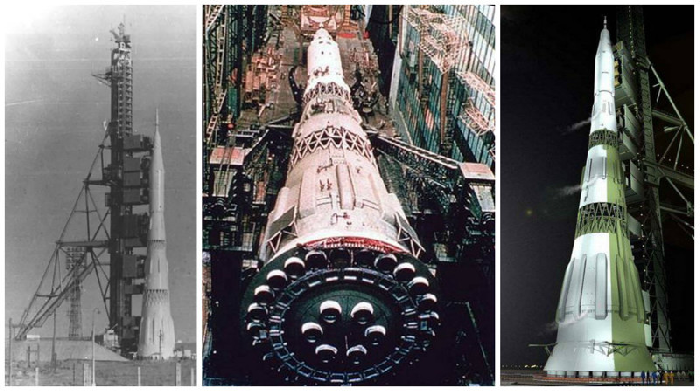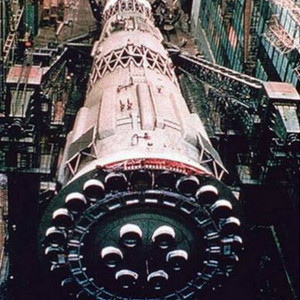This is the story of the biggest Soviet launch vehicle ever built: N1. It was 25th of May 1961 when the President J. F. Kennedy announced to all the world that USA would have reached the Moon and would have come back in safe with Apollo program. It was a milestone for the Space race between the two Cold war rivals. So, to achieve the same goal Soviet Union decided to secretly pursue a crewed lunar program. It consisted of two parallel programs: the first was Zond program that would have to do a crewed lunar flyby thanks to Soyuz L1 spacecraft and the second one would have to do a crewed lunar landing thanks to Soyuz LOK manned spacecraft launched with N1 rocket.
Both failed miserably.

The main cause of this defeat was due to N1 failures. Let us discover them. This super heavy-lift launch vehicle was created as a counterpart to the US Saturn V. It had all the right credentials to become it. It consisted of five stages, the first three of N1 for insertion into low Earth orbit and the last two of payload, called L3, for translunar and lunar orbit injection. N1 used kerosene/based rocket fuel. The first stage was the most powerful rocket stage ever built. In 1963, the senior Soviet rocket engineer, Sergei Korolev began the development of N1 rocket having in mind a crewed flight to Mars and Venus...
Then Korolev’s design bureau reviewed their plans to pander the lunar program. They realized the renamed N1-L3 rocket. There wasn’t much time left, meanwhile US tested a lot of Gemini program missions. However, in January 1966 Korolev died and the whole soviet program was heavily delayed.
The first attempt was in February 1969 and failed only after 54 seconds because a failure in one of sub-engines brought the KORD (The Automatic Engine-Controlled System) to switch-off the main engines. Three weeks before Apollo 11 mission in July 1969 the second attempt. It brutally failed. Due to a turbopump failure few second after lifting-off the engine switched-off and the rocket dropped back in the launch-pad generating the largest artificial non-nuclear explosion in human history. For the third attempt, they waited almost 2 years. In this case was an unexpected eddy that brought to an uncontrolled roll that KORD read switching-off the engine of first stage. In one year, they improved the sensors of KORD from 700 to 13000 to avoid wrong interpretation. After one year, in 1972, the launch at the fourth-attempt, suffered an explosion of #4 engine at T+90 sec, caused by a hydraulic shock wave on the feeding fuel system. It was a total disaster.
In May 1974 N1-L3 program was cancelled and the fifth attempt never took place.
It was like this that this disgraceful mark in the Soviet Union rocket history remained secret until December 1991 when Soviet Union was collapsed.
Giulio Orlando, Stefano Scarso


